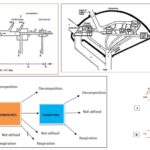O Level Biology 35 Views 1 Answers
Sourav PanLv 9November 4, 2024
Describe the functions of the types of human teeth in physical digestion of food
Describe the functions of the types of human teeth in physical digestion of food
Please login to save the post
Please login to submit an answer.
Sourav PanLv 9May 15, 2025
Human teeth are specialized structures that play crucial roles in the physical digestion of food. There are four main types of teeth, each with distinct functions that contribute to the overall process of chewing and breaking down food for efficient digestion.
Types of Human Teeth and Their Functions
1. Incisors
- Location: Front of the mouth (four on the top and four on the bottom).
- Function: Incisors are sharp and flat, designed primarily for cutting food into smaller, manageable pieces. Their sharp edges make them effective at biting into fruits, vegetables, and other soft foods.
2. Canines
- Location: Positioned next to the incisors (two on the top and two on the bottom).
- Function: Also known as cuspids, canines have a pointed shape that allows them to grip and tear food. They are particularly useful for handling tougher foods such as meat, assisting in the initial breakdown before further chewing.
3. Premolars
- Location: Located behind the canines (total of eight).
- Function: Premolars, or bicuspids, have a flat surface with ridges that facilitate crushing and grinding. They serve as a transition between the tearing action of canines and the grinding action of molars, effectively breaking down food into smaller particles before it moves to the molars.
4. Molars
- Location: Found at the back of the mouth (typically twelve, including wisdom teeth).
- Function: Molars are broad and flat, designed for grinding and chewing food thoroughly. They perform about 90% of the chewing work in the mouth, making them essential for breaking down food into a consistency suitable for swallowing and digestion. Their structure allows them to crush food effectively, maximizing surface area for digestive enzymes to act upon.
0
0 likes
- Share on Facebook
- Share on Twitter
- Share on LinkedIn
0 found this helpful out of 0 votes
Helpful: 0%
Helpful: 0%
Was this page helpful?




